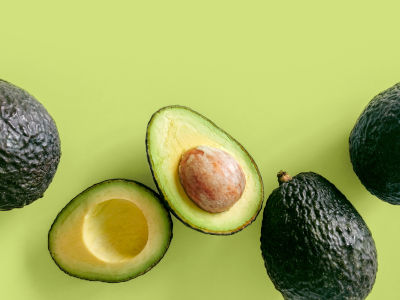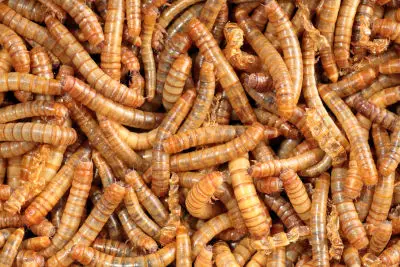How to Make Wood Safe for Reptiles: Tips and Tricks
Reptile owners often face the challenge of creating a safe and comfortable environment for their pets. One important aspect of this is ensuring that the wood used in their enclosures is safe for reptiles. Wood can be a great addition to a reptile’s habitat, providing climbing structures and hiding places, but it can also pose potential health risks if not properly prepared.
There are a few key steps to take when preparing wood for reptile enclosures. First, it’s important to choose the right type of wood. Certain types of wood, such as cedar and pine, can release harmful oils and chemicals that can be toxic to reptiles. Hardwoods like oak, maple, and birch are generally safe options. Once you have selected your wood, it’s important to properly clean and sanitize it before use. This can help eliminate any potential pathogens or parasites that could harm your reptile.
| Are these foods dangerous for your Beardie? | |
| Avacado? Click here to learn, from this guide, if this food is dangerous |  |
| Superworms? Click here to learn, from this guide, if this food is dangerous |  |
Understanding Reptile Safety and Wood
When it comes to creating a safe and comfortable environment for reptiles, choosing the right materials is essential. Wood can be a popular choice for reptile habitats due to its natural appearance and versatility. However, not all types of wood are safe for reptiles to use.
Some types of wood can be toxic to reptiles and cause health problems. For example, wood that has been treated with chemicals or pesticides can be dangerous for reptiles to come into contact with. Additionally, wood that has been exposed to mold or fungus can also be harmful to reptiles.
To ensure reptile safety, it is important to choose the right type of wood for your reptile’s habitat. Some safe options include:
It is important to note that even safe types of wood should be properly cleaned and sanitized before being used in a reptile habitat. This can help to remove any potential toxins or harmful substances that may be present on the wood.
Overall, understanding reptile safety and wood is essential for creating a safe and healthy environment for your reptile. By choosing the right type of wood and properly maintaining it, you can help to ensure that your reptile stays healthy and happy in their habitat.
Types of Safe Wood for Reptiles
When it comes to selecting wood for reptile enclosures, it is essential to choose the right type of wood. Not all woods are safe for reptiles, and some can even be toxic. Here are the two main types of wood that are safe for reptiles:
Hardwood Species
Hardwood species are the most commonly used type of wood for reptile enclosures. They are durable, long-lasting, and resistant to rot. The following hardwood species are safe for reptiles:
- Oak
- Maple
- Birch
- Beech
- Ash
These hardwood species are readily available and can be found at most home improvement stores. They are also relatively affordable, making them an excellent choice for reptile owners on a budget.
Softwood Species
Softwood species are less commonly used for reptile enclosures but can still be safe if chosen carefully. Softwoods are generally less durable than hardwoods and can be more prone to rot. However, some softwood species are safe for reptiles. The following softwood species are safe for reptiles:
- Cedar
- Redwood
- Pine (kiln-dried only)
It is important to note that not all softwoods are safe for reptiles. Many softwood species contain natural oils and resins that can be toxic to reptiles. It is crucial to research the specific type of softwood before using it in a reptile enclosure.
In conclusion, when selecting wood for a reptile enclosure, it is important to choose the right type of wood. Hardwood species such as oak, maple, birch, beech, and ash are safe and readily available. Softwood species such as cedar, redwood, and pine (kiln-dried only) can also be safe but require careful research.
Preparation of Wood for Reptiles
When preparing wood for reptiles, it is important to take certain precautions to ensure that the wood is safe for your pet. The following sub-sections provide information on how to clean, bake and seal wood to make it safe for reptiles.
Cleaning
Before using any wood in a reptile enclosure, it is essential to clean it thoroughly. This helps to remove any dirt, debris, and harmful substances that may be present on the wood. To clean the wood, follow these steps:
- Use a stiff brush to remove any loose dirt and debris from the wood.
- Soak the wood in a solution of 1 part bleach to 10 parts water for at least 24 hours.
- Rinse the wood thoroughly with clean water.
- Allow the wood to dry completely before using it in the enclosure.
Baking
Baking the wood is an effective way to kill any bacteria, fungi, or parasites that may be present. To bake the wood, follow these steps:
- Preheat the oven to 250°F.
- Place the wood on a baking sheet and bake it for at least 30 minutes.
- Allow the wood to cool completely before using it in the enclosure.
Sealing
Sealing the wood helps to prevent it from absorbing moisture and harboring bacteria or fungi. To seal the wood, follow these steps:
- Sand the wood to create a smooth surface.
- Apply a non-toxic sealant to the wood, such as polyurethane or a food-grade wax.
- Allow the sealant to dry completely before using the wood in the enclosure.
By following these steps, you can ensure that the wood in your reptile enclosure is safe for your pet.
Potential Risks and How to Avoid Them
Toxic Wood Species
Not all types of wood are safe for reptiles. Some species of wood can be toxic and cause serious health problems for your pet. For example, cedar and pine contain oils that can irritate a reptile’s respiratory system and cause liver damage. Similarly, redwood and eucalyptus are also toxic to reptiles.
To avoid using toxic wood species, it is important to do your research and choose the right type of wood for your reptile’s enclosure. Some safe options include oak, maple, and birch. It is also recommended to avoid using treated or painted wood, as these can contain harmful chemicals.
Pests and Parasites
Another potential risk when using wood in a reptile’s enclosure is the presence of pests and parasites. Wood can harbor mites, ticks, and other unwanted critters that can harm your pet.
To avoid introducing pests and parasites, it is recommended to thoroughly inspect any wood before using it in your reptile’s enclosure. Look for signs of infestation, such as holes or sawdust, and avoid using any wood that appears to be damaged or compromised.
Additionally, it is important to clean and sanitize any wood before placing it in your reptile’s enclosure. This can be done by baking the wood in an oven at 250°F for 30 minutes or soaking it in a solution of water and vinegar for several hours.
By taking these precautions, you can help ensure that the wood in your reptile’s enclosure is safe and free from harmful toxins and pests.